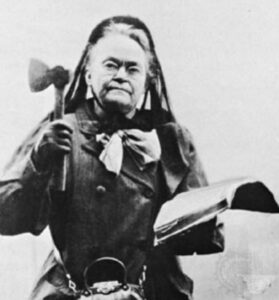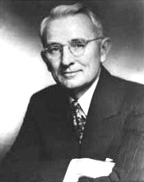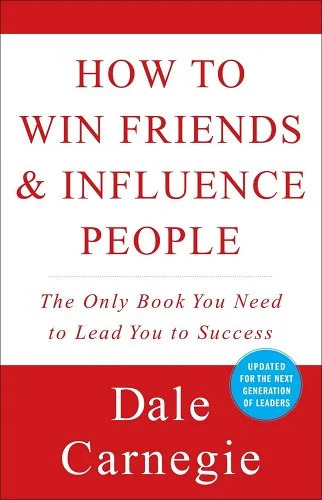Our friendships hurry to short and poor conclusions, because we have made them a texture of wine and dreams, instead of the tough fiber of the human heart…. A friend therefore is a sort of paradox in nature…. Let him be to thee forever a sort of beautiful enemy, untamable, devoutly revered, and not a trivial conveniency to be soon outgrown and cast aside.”
Ralph Waldo Emerson, “On Friendship” (1841)
Warrensburg, MO. In these days of friending and defriending, of networking and influencing, Emerson’s words still shed light on the relational power one person has upon another, as well as on the affinity groups which develop along the way. While friend often gets applied to others too lightly, and influence can easily be coercive rather than formative, there is something worth observing about the true and the false within both—between the character of one who weathers experiences with a kindred soul and one who is simply seeking personal advantage; between one who accepts another over against one who only wants to impose upon that other. Spoken convictions and lived actions often do reveal the content of one’s character as manifested over time. The well-known saying tracing back to the Roman poet Quintus Ennius—”A friend in need is a friend indeed”—affirms this, as does Emerson’s dictum: “The only way to have a friend is to be one.” Yet Emerson also knew that within such a relationship it is “better to be a nettle in the side of your friend than his echo.”
C.S. Lewis wisely observed about friendship, in his classic work The Four Loves, “that few value it because few experience it,” and called it a relation between persons “at their highest levels of individuality.” He also keenly discerned that authority often perceives a threat in friendship because every real one “is a sort of secession, even a rebellion.” It is worth noting that on the Passover night when everything took a dramatic turn for Jesus and his disciples, he signaled a relational change by telling them that he no longer called them servants but friends because he had revealed to them all that he knew from the Father in an intimacy of trust (John 15:15). The ordeal of Jesus’ arrest, crucifixion, burial, and even resurrection tested the character of those friends he had influenced through three years of shared life—and very few seem to have come through it well, at least initially. Friends are made by experience but also lost by abandonment—as every human being alive most certainly has known, Jesus himself proving no exception.
Over the years of my life of enduring and fading friendships, I’ve encountered recurring references to two people who, although in many ways each other’s opposites, taken together are instructive windows into the influence one life has upon another: Carry Nation, the hatchet-wielding saloon smasher and Prohibition proponent (a polarizing figure who might well have made more enemies than friends) and Dale Carnegie, who popularized building bridges with others in his 1936 How to Win Friends and Influence People (which remains one of the biggest best-sellers of all time). These two from different generations and divergent paths have converged upon mine and prompted me to reflect upon the lessons their lives might hold for those seeking to befriend and influence others for good.
I believe I first encountered Carry Nation while I was a teenager on a family vacation in Eureka Springs, Arkansas. I remember stopping to read a historical plaque at the building where she collapsed while giving her last speech. As my life progressed, I always seemed to wind up in other locations intertwined with her history and eventually discovered that she and I shared the same November birthday. When I was first settling in Warrensburg—the town I have known as home for over fifteen years now—I learned that Carry Nation and Dale Carnegie are two of the most famous alumni of its University of Central Missouri (which for them was State Normal School No. 2)—with Carry graduating the first year after its founding. More recently, I stumbled on the detail that Dale’s birthday is the day before ours, so I decided to follow the convergence of time and place where it might lead in our otherwise distant and unrelated lives. At times I have found myself wondering about their youthful years on nearby farmsteads, as well as speculating on the experiences and encounters they had with others in the very locations I unknowingly traverse each day. What broke them and spurred them on—individually and in relation to others—as their lives unfolded here and beyond? That was my quest to discover.
Carry Nation
Born in Kentucky just five years after Emerson penned those words on friendship, Carry grew up on a large farm in the close company of siblings and her family’s slaves. Carry adored her father, but her mother’s harshness led her to keep company with the slaves and feel a strong bond of kinship with them in their cabins. Her family moved to farm in Missouri in 1854, but pervasive political division prompted her father to relocate them to Texas in 1862, only to return to the Missouri farm the following year. When the Union Army ordered everyone out of the Missouri-Kansas borderlands, Carry’s family moved to Kansas City where she joined another woman in nursing wounded soldiers following a raid. When she was twenty-one, she married the young physician and former Union soldier, Charles Gloyd, who had previously been her parents’ boarder—and of whom they disapproved due to his drinking. Even though Carry had a deep love for Charles, living with him soon became unbearable and financially difficult, so she left him and returned to her parents the following year—heartbroken and pregnant with their only child. Six months after Carry gave birth to their daughter, whom she named Charlien, Charles was dead, and she was a penniless widow at the age of twenty-two.
In the wake of that upheaval, Carry sold Charles’s library and medical equipment, along with the land her father had given her, and moved to the nearby town of Holden to build a small house for herself, her daughter, and Charles’s mother. Carry earned her teacher certification in 1872 and taught school for the next four years, until she was apparently fired, and then promptly replaced by a school official’s relative. Carry married David Nation—the Warrensburg widower-father, lawyer, and journalist who was nineteen years her senior—in 1874, and that increased her sphere of commitments once again. The Nations moved to Texas in 1877, and there, David practiced law while Carry owned and managed a hotel. It was during the ensuing decade that Carry experienced a deepening faith and began having dreams and visions.
On becoming a minister in 1889, David moved the family to Medicine Lodge, Kansas. In that new location, Carry devoted herself to charitable work primarily on behalf of women and children. She became known for her dedicated generosity and began being spoken about with deep respect as “Mother Nation.” Seeing the wreckage of lives ravaged by alcoholism, Carry started a chapter of the Woman’s Christian Temperance Union (WCTU)—which had helped pass a law against selling alcohol in Kansas. Informed by the Greek philosopher Xenophon’s definition of temperance as “moderation in all things beautiful; total abstinence in all things harmful,” the women who gathered into the WCTU sought to exert their influence against the familial and societal destruction they saw unleashed by alcohol—and not having the right to vote, they sought to do so by changing minds and laws. Kansas Prohibition had taken statewide effect in 1881 but was not effectively enforced on that level until 1907. Knowing that many wound up in jails due to drunken behavior, Carry visited prisoners and provided compassionate attention to them even as she campaigned for the illegal bars and men’s clubs to be shut down. In a concerted effort to effect that end, Carry and her fellow women prayed and sang hymns outside of those drinking establishments until every last one in Medicine Lodge was closed.
Feeling that God wanted her to accomplish the same elsewhere in the state, in 1900 Carry exerted her efforts toward shutting the bars in Kiowa—this time throwing bricks at the buildings instead of just relying on hymns and prayers. When she began yielding a hatchet in 1901 and used it in busting up bars, people took notice. Soon after, Carry took her campaign to Wichita and Topeka, where like-minded women were drawn to her. The WCTU awarded her a gold medallion as “The Bravest Woman in Kansas.” When her turmoil-ridden marriage came to an end that same year with David filing for divorce, Carry used the entire alimony amount to establish in Kansas City, Kansas, the first domestic violence shelter in the state—specifically for the family members of alcoholics. Carry supported herself by going on speaking tours and selling miniature pewter hatchets, as well as publishing a paper called The Smasher’s Mail—which was later followed by The Hatchet. Carry used these means to address what she saw as the evils of alcohol and disseminate news from the anti-saloon frontlines, but also to encourage the cultivation of good home and family life and to push for women’s right to vote.
Lest one think that Carry simply wanted to enact violence and have a “smashing” good time, oblivious to the friends and enemies she made and lost along the way, it is helpful to note that she did follow a protocol. Always first in her plan of action was speaking on the streets or in public halls—all while remaining undeterred by the laughter and derision of those in the crowds. Next, after establishing a level of support, she asked the appropriate officials to enforce the law and pointed out how the neglect to do so only furthered alcohol’s havoc on lives in their communities. Only then, if the officials refused to uphold the law, did she and the women enter the “joints” and begin busting them up. While destruction of property is legally and societally regarded as violence, remember that anyone who has ever been on the receiving end of a drunken rage has suffered fists, kicks, hammers, hatchets, knives, and whatever else on their very bodies. Having seen and suffered through the results of such abuse too often, along with the attendant deprivation of dignity and basic necessities, Carry had no qualms about placing people above buildings and profits. When jailed for disturbing the peace or destroying private property, she always asserted that she was simply trying to get the police and sheriffs to do their jobs, since alcohol sales were illegal and women had no legal recourse in a male-dominated society.
Carry was bombastic, most assuredly. She and her sisters-in-arms were known to break bottles, windows, and mirrors, in addition to rolling whiskey barrels into the streets and setting them on fire. She found her inspiration and incitement in the Bible, of all places, reading in Jeremiah 1:10 that the prophet was appointed “to pluck up and break down, to destroy and to overthrow” as well as “to build and to plant.” She claimed that incendiary role and had no reservations in referring to herself as “a bulldog running along at the feet of Jesus, barking at what He doesn’t like.” She greeted bartenders with, “Good morning, destroyer of men’s souls!” because she had seen too much evidence of that inside and outside their walls. In railing against domestic violence and the financial instability women frequently endured because their men spent their earnings on alcohol, and then came home drunk and quickly angered, Carry backed up her words boldly and nonviolently with her body—taking numerous beatings from furious opponents and persisting through them all. Although she was mocked by many, instead of replying with anger, Carry used those occasions as opportunities to encourage the extension of power to women by including them in the democratic process, saying, “The loving moral influence of mothers must be put in the ballot box!” If women had the right to vote, she argued, they wouldn’t be resorting to these tactics.
In 1903, Carry officially changed her first name from the given “Carrie” to the spelling her father had really wanted, and with her middle initial being A., she could now visibly demonstrate her desire to “Carry A Nation” for Prohibition. Her autobiography, The Use and Need of the Life of Carry A. Nation was published in 1905, and in 1908 she embarked upon a speaking tour throughout the United Kingdom. Mark Lawrence Schrad, author of the 2021 release Smashing the Liquor Machine: A Global History of Prohibition, relates that people in England were shocked to find Carry nothing like her newspaper caricatures and praised her for her “remarkable wit … good sense of humor, wise general outlook upon life, a kindly, even modest and unassuming manner … [with] the light of a visionary in her eyes.” Carry developed a strong affection for the Scottish landscape during that tour, so when looking for a place to retire the following year—exhausted and in poor health—she settled in Eureka Springs, Arkansas, because it reminded her of Scotland. Carry bought the boarding house there that she called Hatchet Hall and ran it as a refuge and school for women and children who had fled from alcoholic abuse and had nowhere else to live. She carried on that daily work of mercy until her death in 1911. Although she had seen significant advancements in the causes to which she had devoted her life, Carry did not live to see them become the national realities they did when, in 1919, the 18th Amendment prohibited the sale of alcohol (from 1920 until its repeal in 1933), and when the 19th Amendment finally extended the right for women to vote the next year.
Dale Carnegie
Born in northern Missouri in 1888, with a last name originally spelled Carnagey, Dale grew up a farm boy who wasn’t very athletic but did excel as a student. He displayed special skill in public speaking and participated in debate while in high school and college. Because of his humbler material life and less fashionable clothing, Dale felt the weight of inferiority when keeping company with the more affluent students. Things changed dramatically for him though when he heard a traveling Chautauqua speaker come to Warrensburg and give a lecture. He soon adopted his mannerisms and style of speech and found himself emboldened by a confidence which others noticed and responded to favorably. When he finished at the teacher’s college in 1908, Dale began giving lessons on public speaking while undertaking a series of salesman jobs. Then, in 1911 (the year Carry died), he changed direction and enrolled in the American Academy of Dramatic Arts in New York with the ambition of becoming an actor. He soon abandoned that, however, and began teaching speaking skill courses at YMCA centers. Those classes eventually led him to write (with Joseph Berg Esenwein) The Art of Public Speaking, which became wildly popular upon its publication in 1915. Within a year, Dale was speaking to a sold-out crowd at Carnegie Hall and got the idea of changing the spelling of his last name to align with the business tycoon and philanthropist Andrew who had funded that prestigious venue. He made his name change official in 1919.
Having unsuccessfully sought Conscientious Objector status, Dale wound up serving in the U.S. Army for a year. Following his release, he resumed public speaking and traveling in that capacity. While on a lecture tour in London, he observed Speaker’s Corner in Hyde Park and noticed that the most enthusiastic orators drew the biggest crowds, so he integrated projecting that excitement as a new emphasis in his teaching. The Dale Carnegie Training found eager acceptance by corporations such as GM and IBM for instilling confidence in their employees and those with whom they interacted. Dale’s Public Speaking: A Practical Course for Businessmen was published in 1926 and cemented his reputation for having the leading methodology in the field. Personally, things were not so good for him though, and his childless marriage to Lolita, whom he had met in Europe and later married in 1927, ended in divorce in 1931.
Dale’s enduring claim to fame came in 1936 with the publication of How to Win Friends and Influence People—which flashed on the desperate Depression scene and began a trajectory of huge sales over succeeding years. On the heels of that national attention, Dale returned to his alma mater, now Central Missouri State Teacher’s College, in 1937 for a speaking engagement as its most celebrated alumnus. Between the marriage to his secretary Dorothy and the birth of their only daughter, Donna Dale Carnegie, came the release of his follow-up best-seller, How to Stop Worrying and Start Living, in 1948. It seems that Dale had arrived at a good and level place of flourishing. In 1955, while living in Forest Hills, New York, his Missouri alma mater conferred an honorary doctorate upon him—and he died that same year. While Dale Carnegie’s name recognition certainly rivals Andrew Carnegie’s, Dale did not follow his predecessor’s endeavor of large-scale social philanthropy. Dale’s widow, Dorothy, actively ran the company from his death until 1978, and by the time she died twenty years later, it boasted offices in seventy countries, five million graduates, and $187 million in annual sales.
I will confess to being a bit wary of Dale Carnegie over the years, not only because of the zealous business-driven adherents I have known who have lauded his hallmark book, but also because of the brash exploitation I perceived from its title about winning and influencing without ever having read it. While reviewing the basic tenets of his approach in the wake of the former U.S. president’s rise and fall from office (attended as that was by strange bedfellows and crass coercion which only increased angriness and incivility), I found myself agreeing quite favorably with what I now encountered. If only more people accorded themselves with what he held forth: “Be considerate; show sincere interest in others; be a good listener; consider other points of view, cooperate with others, be positive, and avoid criticizing others.” Any attempts at instilling those qualities and modes of interaction instead of exerting raw influence for self-promotion sound wholly positive and worthy of encouragement to me!
Human insight and practical wisdom do resound through Carnegie’s maxims and aphorisms, such as these: 1) Any fool can criticize, condemn, and complain, but it takes character and self-control to be understanding and forgiving. 2) Don’t be afraid of enemies who attack you. Be afraid of friends who flatter you. 3) When dealing with people, remember you are not dealing with creatures of logic, but with creatures bristling with prejudice and motivated by pride and vanity. 4) If you do something for someone else, never remember. If someone does something for you, never forget. 5) If some people are so hungry for a feeling of importance that they actually go insane to get it, imagine what miracle you and I can achieve by giving people honest appreciation this side of insanity.
Within minutes of reading those statements to great approval, it was quite unsettling to read excerpts of Jeff Guinn’s 2013 Manson: The Life and Times of Charles Manson and learn that yes, none other than Charles Manson took classes in Carnegie’s method during an early stint in prison and found the chapter on cooperation to be critical for getting people to open up to him and shape how he could influence them. Even though Dale would have found Manson’s application of his methods abhorrent, they fueled one hungry for self-importance and lacking in empathy. That consuming fire of extremely destructive narcissism encompassed me a few years ago in this very town of Carry and Dale’s, and even as I lament what went awry from my devoted altruism to one flailing on life’s margins, I am humbly aware of the mercy of simply being alive after being so close to death.
Lives and Lessons Coming Together
Maybe it was inevitable that I should seek to find out where Carry and Dale were buried, but I in no way expected them to share the same cemetery only about an hour’s drive from my home. Puzzled as to how they both wound up in the same final resting place, I discovered that both sets of parents had settled farms in that area for a time as well. So, on a glorious October day, I drove to the Belton Cemetery and visited their graves which are just two streets apart—Carry on First and Dale on Third.
Carry was buried in an unmarked grave next to her mother because she had hardly any money to her name at the time of her death. Her large above-ground stone was paid for by the WCTU and is easy to spot. It bears her name, birth and death years, and this description: FAITHFUL TO THE CAUSE OF PROHIBITION, along with the attribution of her final words: “SHE HATH DONE WHAT SHE COULD.” I wanted to add a penny to those already atop her light grey stone, but since the coin-box in my car was entirely empty, I simply patted my hand on top and said, “You did well, Carry. You did.”
Dale’s stone does not stand out from a distance, flanked as it is on one side by the similar ground-level rectangular slabs of his parents’ graves and an identical one on the other (the unused grave of Dorothy, who had remarried and was buried in New York). Dale’s small grey stone atop that slab simply bears his name as well as his birth and death years. There is not a single accolade or proclamation of notoriety. The only thing else is a small gold trophy of a businessman with briefcase in hand. As I was using a phone app to locate that grave, I was linked to a YouTube video of a man, one-year prior, who had made a cross-country trip to this very spot. I could not help but watch his homage right there and then to the man whose books had so profoundly shaped his life—the greatest form of influence.
The following month, ten days before my shared birthday with Carry, I returned to well-acquainted Eureka Springs to track down Hatchet Hall at long last. Appearing to be an ordinary private residence without the identifying sign I had seen online, the simple and stately white house stands on a hillside street above a tree-filled valley. I had walked past it unknowingly in the spring during my only other time on that road, but this time I tried to envision the women and children who took up residence there. I pictured them on the front porch trying to forget bitter memories, still healing from deep wounds yet surprised by the freeing gifts of joy and laughter—most likely because that is what I have experienced as one who has survived horrific alcohol and drug-fueled violence while trying to befriend to the ragged edges one whose toxic orbit included me. I imagined the solace they probably found on that hillside, surrounded by outcropping rocks, plentiful trees, and each other—loss and gain coming together as melancholic tears met merciful peace—and I claimed it for myself. That, to me, is what characterizes true friendship—life shared in pain and joy as a companionship of trusting presence which seeks first of all not to influence but simply to be alongside in the humblest and holiest of ways possible for us humans.
I share Carry’s heart for the outcast and downtrodden. I rally with her as she not only shouted down the preacher in his pulpit for denouncing her neighbor (whose alcoholic husband had called her an adulteress), but also as she ensconced herself in the pew and resisted bodily removal by the elders. It seems that Carry got expelled from just about every congregation she ever belonged to for, like Jesus, she couldn’t countenance the hypocrisy of religious leaders who prized offerings and rites while neglecting “the weightier matters of the law: justice and mercy and faithfulness” (Matthew 23:23). And while Carry excoriated those who drove liquor sales at every level, she was also known to say that saloonkeepers and prostitutes had a better chance of heaven than the hypocrites in church, as well as being quick to add that she had “no use for women who are afraid they will soil their skirts in trying to lift up their fallen sisters.” As one who spent a good bit of time in jail herself, Carry was no stranger to society’s harsher spheres or the opportunities they gave for solidarity at the most basic human level, and she lived her philanthropy as she went.
While Carry certainly looms larger for me than Dale, I have come to find the lives of both instructive for existing with others. Although their circumstances and center-points were vastly different from each other, both saw the importance of attentiveness to the most unassuming interpersonal exchanges of every day, and both sought properly to balance self in relation to others—even as they also saw how tweaking their names a bit could serve their purposes in a grander way. Dale seems not to have made many enemies—in contrast to Carry—but then again, his life was not driven by the contentious moral and social issues that hers was as she pushed for needed improvements and reform. Nevertheless, he was clear in stating that hating our enemies gives them power over us and rids us of self-control.
I recently felt drawn to pull The Commonweal Reader off my shelf (which I hadn’t perused in years) and was stunned to find an article entitled “How I Ran Out on Carrie Nation.” The author was E. A. Braniff, who had worked under Gifford Pinchot at the US Forest Service and was the elder brother of the founders of Braniff International Airlines. In the captivating piece, Braniff recalled how he had met Carry in 1902 in Topeka, Kansas, as a young reporter for The Kansas City Star. He noticed right away how worn out her clothing was, even as “her beaming, humorous face had something of the shine of her clothes, as if it too were being perpetually scrubbed and polished.” The young Catholic and older Protestant soon became friends, and Braniff championed her as being morally and fundamentally right—to the disbelief, dismay, and disapproval of his editors.
While Braniff was studying at Yale School of Forestry in Connecticut, he received letters from Carry—one from Holden, Missouri, as she was visiting Charles’ grave and preparing to visit the Belton Cemetery the next day—and another in which she wrote: “I get tired of the world, tired of seeing its struggles, tired of seeing its sorrows.” In the last one she wrote to him, from jail in Topeka, she began: “I hope you will not be annoyed at me for being in this place for the third time. It is working out good for my cause.” In one of those letters, Carry expressed her desire to have Braniff help her put her life in writing when he was done with his studies, but in the fall of that very same year, he fled public acknowledgement of even knowing her. He was walking past a crowd of several hundred students and noticed that they had enticed Carry there (with hopes of having fun at her expense), so he stopped to listen. As she addressed them from the steps, he began to fill with great uneasiness as he heard her speak about having “a very dear friend” there who had been with her from the start. Then she said, “If you are in the crowd, Edward, come forward. I want to talk with you.” As the crowd began calling out his name in jest, he hid himself until everyone scattered, realizing it was impossible to face her in that company and dangerous to break away. Cowardly as his conduct seemed all those years later, he acknowledged not going out in public on the New Haven streets again until she had left town. He most likely felt what Peter did after that Passover night around the fire when he denied ever having known or kept company with Jesus.
Emerson also wrote this in his treatise on friendship: “We are to dignify to each other the daily needs and offices of man’s life, and embellish it by courage, wisdom, and unity. It should never fall into something usual and settled, but should be alert and inventive and add rhyme and reason to what was drudgery.” Edward and Carry definitely did that in their lively friendship, but that one spontaneous occasion made it too difficult for him to follow through in the moment and after.
The Jesus who said to John the Baptist’s disciples, “Blessed is the one who is not scandalized by me” (Matthew 11:16) is also the one who sent his disciples out a bit earlier saying, “I am sending you out as sheep in the midst of wolves, so be wise as serpents and innocent as doves” (Matthew 10:16). I guess that paradox is what intrigues me about Carry and Dale’s differing personal constitutions and methodologies. I see them appealing to all of us in different ways—whether we have many friends or few, whether our influence is recognized or not—to embark upon the truly influential gift articulated so well by these final words of the prayer attributed to St. Francis: “Grant that we may not so much seek to be consoled, as to console; to be understood as to understand; to be loved as to love. For it is in giving that we receive; it is in pardoning that we are pardoned; and it is in dying that we are born to eternal life.” May it be so for all of us!
Research relied primarily on the entries for Carry Nation and Dale Carnegie at The State Historical Society of Missouri (www.shsmo.org) and on Wikipedia.







